In less than six weeks, on May 14, I start a week-long, self-supported race while shouldering a pack containing approximately 20 pounds of food and gear. Ninety-nine other competitors and I will go off the grid, camp at night and cover 154 miles through the moist, fragrant and volcanic climate of Hawaii—traversing tangled rain forests, sharp lava rock, sandy beaches and windy grasslands. We’ll be wet, dry, hot and cold, but mostly wet, from sweat and tropical rain.
I’m in the thick of peak training for the Mauna to Mauna Ultra, and if you don’t know what these events are like, then I hope you’ll read my article published by Trail Runner last week, “Five Ways To Know If a Stage Race Is For You.”
Peak training involves increasing your training load and preparing very specifically for the conditions of your race. For multi-day, self-supported stage races, the preparation becomes more complex. Given the interest in the Marathon des Sables, which starts April 7, and similar stage races like the Grand to Grand Ultra, I thought I’d share how I train during the four to eight weeks leading up to this type of race.
Here are some snapshots to give an overview of stage-race peak training:

Long runs with a pack nearly fully loaded (about 18 pounds). I’m using Ultimate Direction’s Fastpack 30. Running with this extra weight slows me down considerably, so I try to cultivate patience and steadiness. On any significant hill, I downshift to hiking.
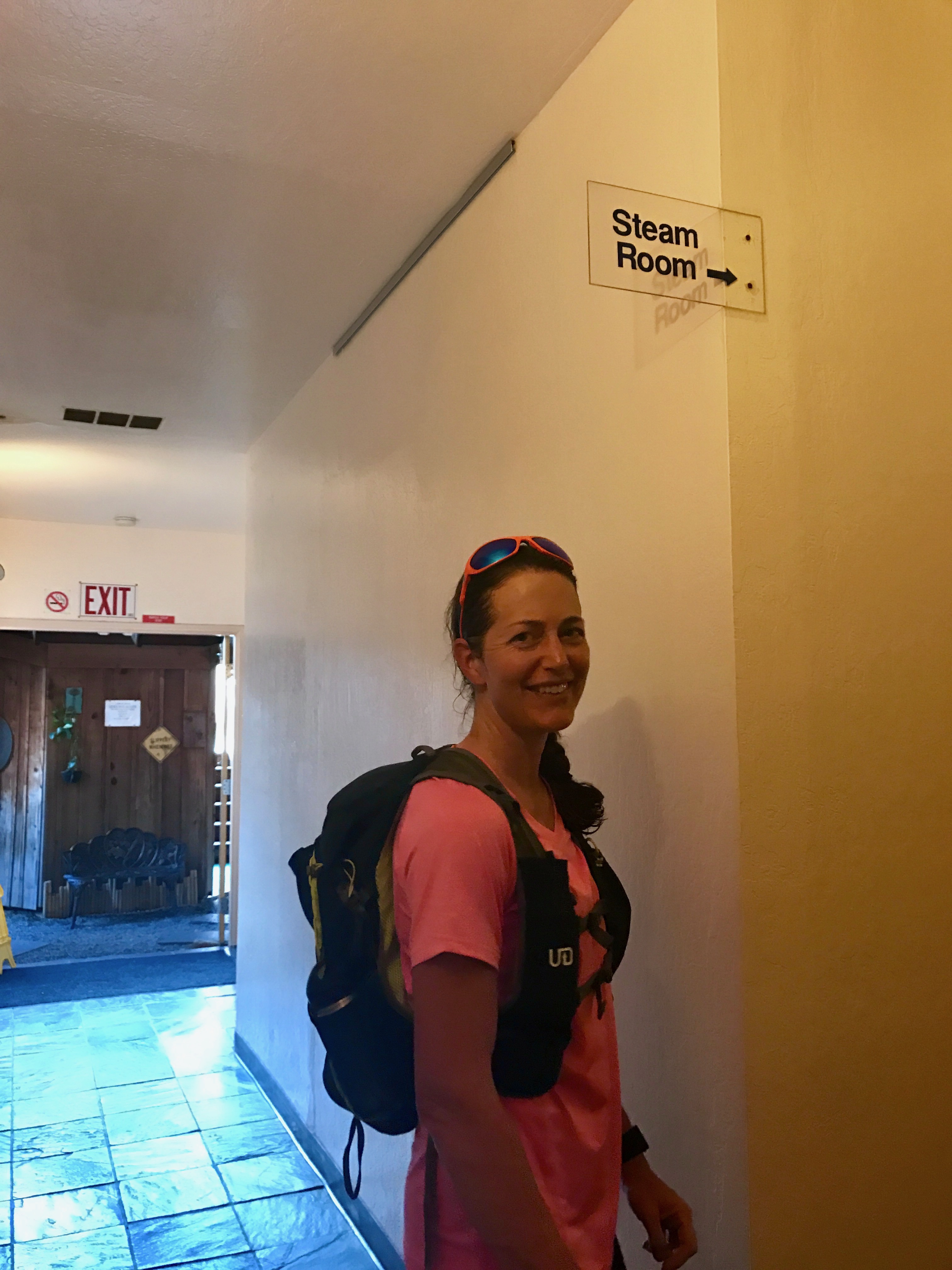
I run to our funky local hot tub rental place and rent the steam room for half an hour, then run afterward in the midday heat to acclimate for Hawaii’s humidity and heat.
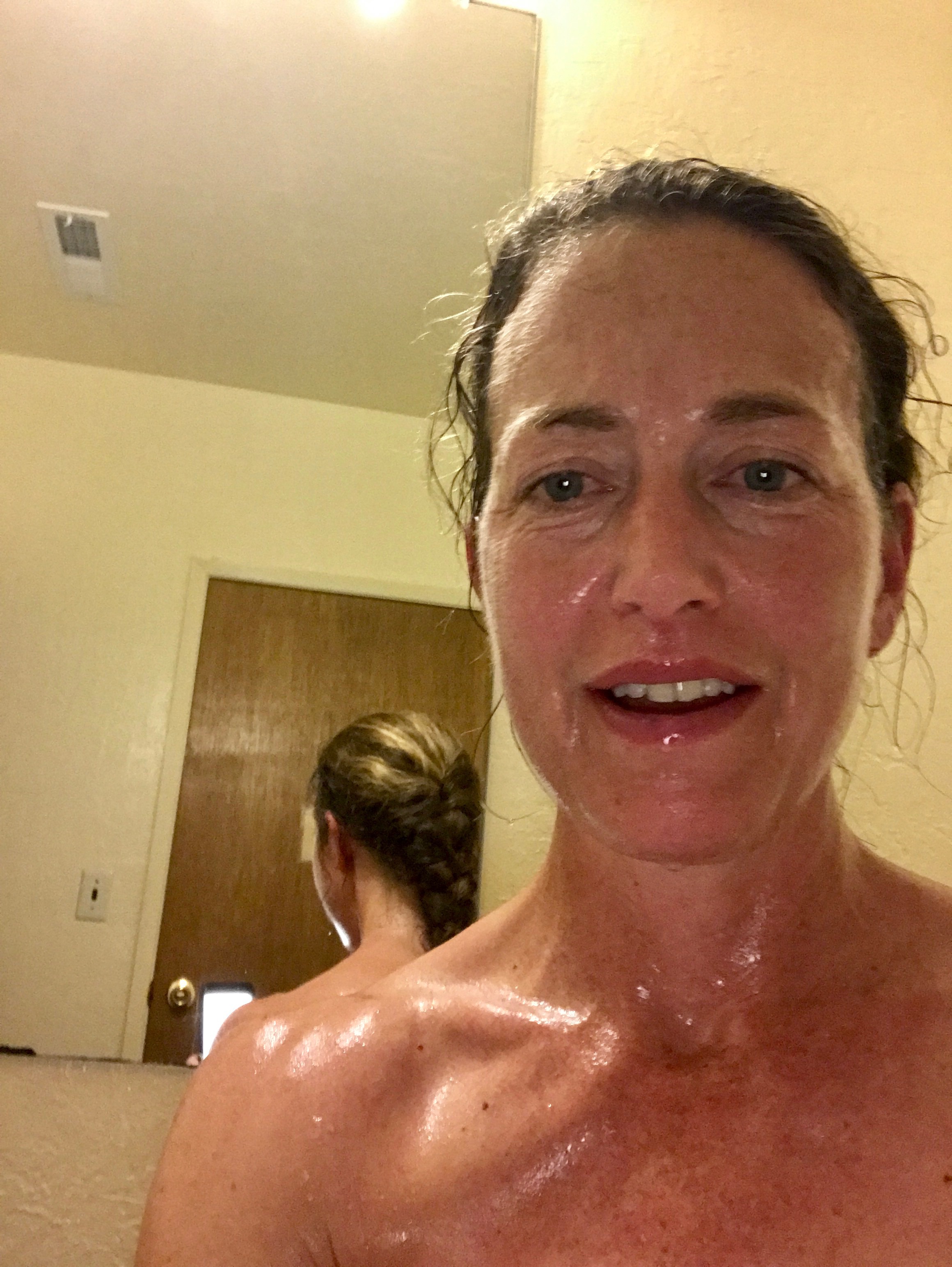
I’m able to last only 15 minutes before I have to step outside to take a little break (pictured here), then I get back in the sauna for 10 – 15 minutes more, doing core exercises and other light movement in there. It’s so oppressively, claustrophobically hot and humid!
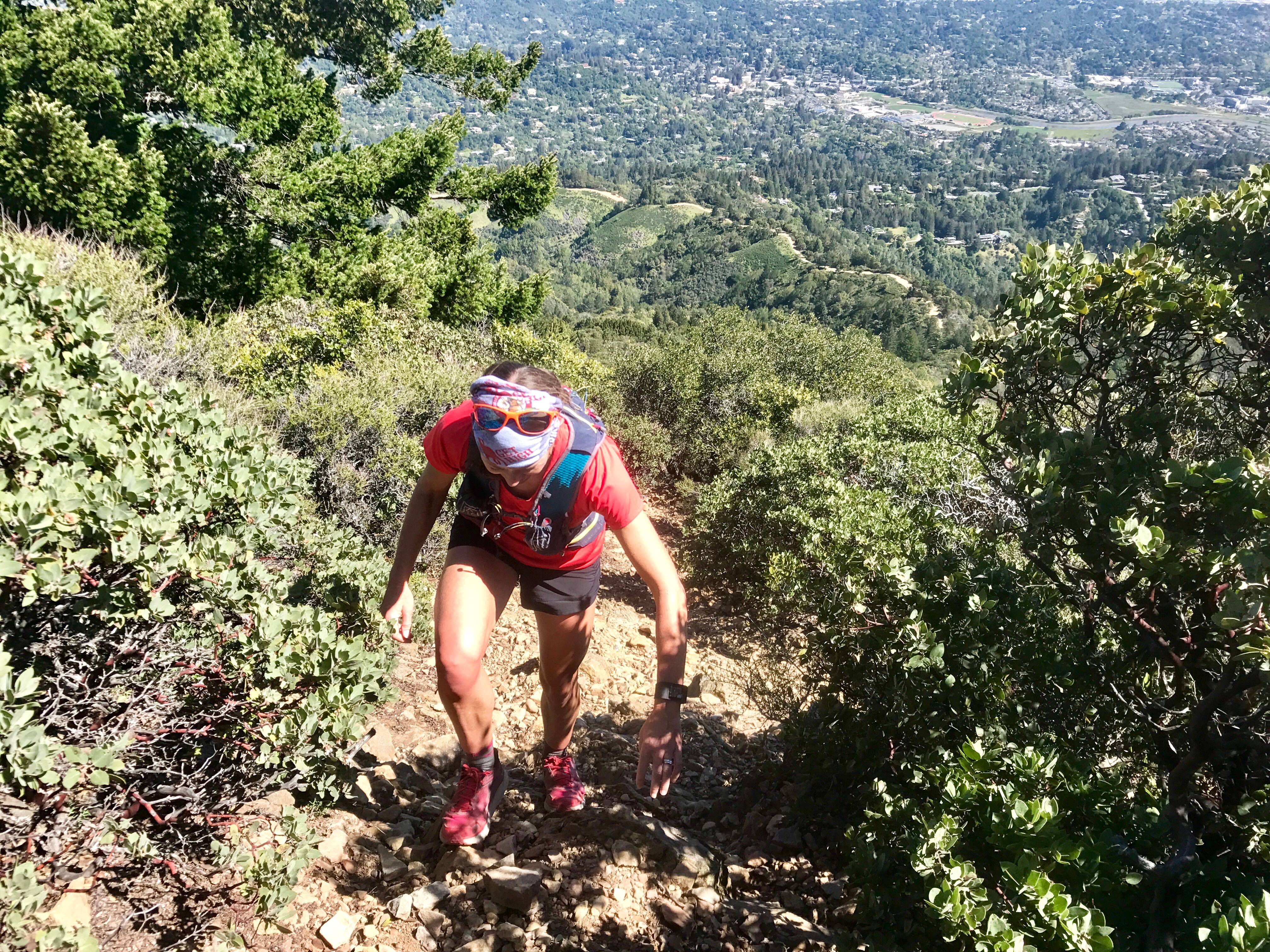
As much as possible, I practice vert and rocky, rough terrain (seen here on a double Tam summit run).
What these pictures don’t show is that I’m also adapting my digestion and metabolism to better handle the limited food I’ll carry and consume during the event. That means, during long workouts, I try to eat more calorie-dense and complex food, but less frequently, instead of ingesting a steady stream of simple sugars as I would during a faster-paced ultra (e.g. I’ll have trail mix, or half a bar, that mixes protein, fat and carbs, in lieu of several gels). During the final phase of a long run, I’ll intentionally bonk (experience the discomfort of running low on glycogen) and keep going at a slow pace to adapt to this feeling of bonk and, hopefully, prompt my body to tap into its fat stores more. Meanwhile, I bought dehydrated backpacker meals to taste test, to see which I want to bring for the event.
I plan to use a few VFuel gels each day of the race, along with VFuel’s drink mix, for quick-absorbing sugar and electrolytes; but, I plan to make do with less. (I’m an ambassador for VFuel and recommend it; you can buy some through their site and use the discount code “Sarah20” at checkout for 20 percent off.)
Since New Year’s, my weekly mileage has been in the 50 – 60 range, and over the past three weeks, I upped it to the mid-60s – 70s by adding a two-a-day and also more weekend volume along with some pack training. Additionally, I’m walking around throughout the day as much as possible. Here’s how last week looked, for example, with 71.5 miles, 14K+ elevation gain, 13.5 hours running/hiking and 45 minutes of PT/conditioning:
The most depleting peak run I have planned takes place April 15, when I’ll do the Diablo 50K with a loaded pack, and then I’ll run longer the next day for a back-to-back.
I still have a lot of work to do, however, to get all my sh*t together and make it as compact as possible to fit in my pack! This is how that process looked in 2014, the last time I did a race like this.
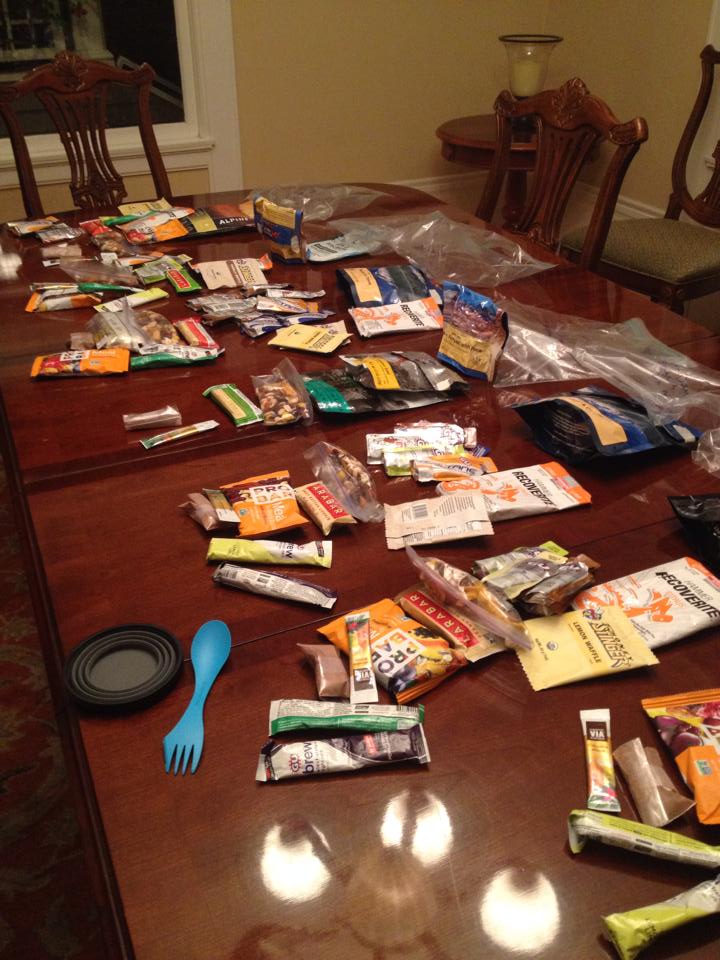
Sorting the food and counting calories on my dining room table in 2014 for the 170-mile week-long, self-supported Grand to Grand Ultra.
I’m equal parts excited and scared to attempt this type of adventure again. Being an inaugural event, the Mauna to Mauna Ultra (see website) has unknowns and therefore added risks. Plus, I’m haunted by the fact that every time I’ve traveled to Hawaii, I’ve spent the first few days feeling as if I’m in the first trimester of pregnancy; that is, slightly “off,” extra slow and mildly queasy when I try to run, due to the heat and humidity.
The race directors don’t publish the exact route (those details remain secret until we start the race), only a general description and a course profile.
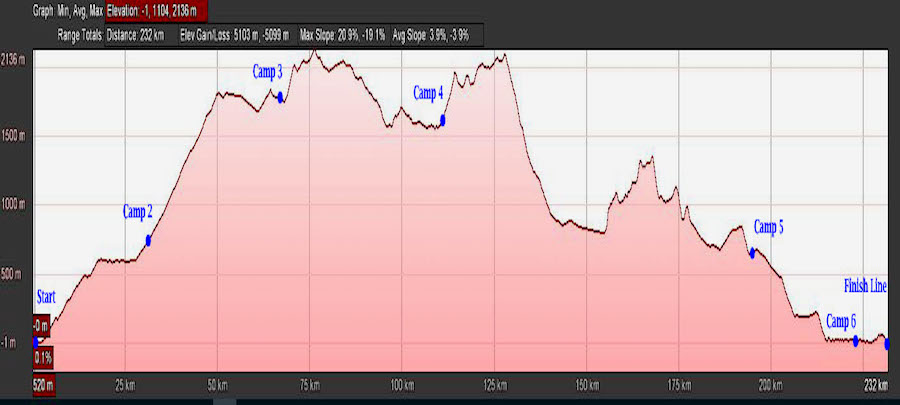
The six-stage Mauna to Mauna Ultra breaks up its 154 miles the following way: 21, 21, 31, 49, 26, 6. Elevation gain totals 16,742 feet with an equal amount of descent.
The website reads, “The starting line is at sea level on Coconut Island off the east coast of Hawaii Island. Camp 1, which is your campsite on the evening before the start of the race, is situated close to the crater of Kilauea at an altitude of almost 4,000ft (1,219m). The finish line is on the west coast of Hawaii Island and provides participants with a spectacular and rewarding view of the Pacific Ocean. On completion of the course, you will have climbed two volcanic mountains and traversed from one side of the island to the other – something not done since the kukini (ancient native Hawaiian runners).”
“Preparation is the key to success,” my first coach liked to say, so I’ll try my best!
While my training is about where it should be, I’ve fallen behind on an important thing related to this effort. As part of doing the Mauna to Mauna Ultra, I launched a fundraising campaign for Free to Run, and I’ve only raised 16 percent of an ambitious $10,000 goal. I should make clear that I’m raising this money entirely for the nonprofit—none of it will be used to offset my travel expenses or race-registration fees; rather, I’m donating all the money I raise to Free to Run, and I’m doing it because I believe strongly in this group’s mission. The girls and women Free to Run helps are inspiring me to push past boundaries and work for change. (For the record, I also want to note that I’m paying for and competing in the Mauna to Mauna on my own; I am not being comp’ed or treated as a media rep.)
I sincerely thank this blog’s readers who’ve already donated to my campaign; if you haven’t, then please visit my crowdrise page to learn more about the group’s mission. You can follow FreeToRunNGO on social media to get great updates like this:
If you’re interested in reading more about training and competing in stage races, then check out this blog’s category of posts related to training and racing in the 2012 and 2014 Grand to Grand.
A few final announcements …
- My book, The Trail Runner’s Companion: A Step-by-Step Guide to Trail Running and Racing, from 5Ks to Ultras, is in production and ships soon! If you order a copy using this link
and then fill out this form by April 30, you’ll be in a drawing for a coaching consultation with me. Please help spread the word about the book by sharing my earlier blog post about it or posting on social media if/when you order a copy.
- If you’re in the Bay Area on Saturday, April 22, I hope you’ll come to a 5pm gathering at the Sports Basement Walnut Creek for this year’s Trails In Motion Film Festival, featuring nine inspiring short films about trail running. I’ll be there as a special guest and will read a short passage from my book. Another special guest will be Wally Hesseltine, star of one of the films showing, Thirty Hours, about his Western States experience last year. (see below for short trailer of the fest)
- Save the date: Wednesday, May 31, 7pm, A Great Good Place for Books in Oakland: my launch party! More details to come.
Enjoy these two videos:


[…] It’s getting hot, heavy, and hard: Sarah prepares for a Hawaiian stage race. […]
[…] weeks ago, I wrote about peak training for the Mauna to Mauna Ultra, which starts in less than two weeks (May 14). Good news: the training is in the bank. Not close to […]